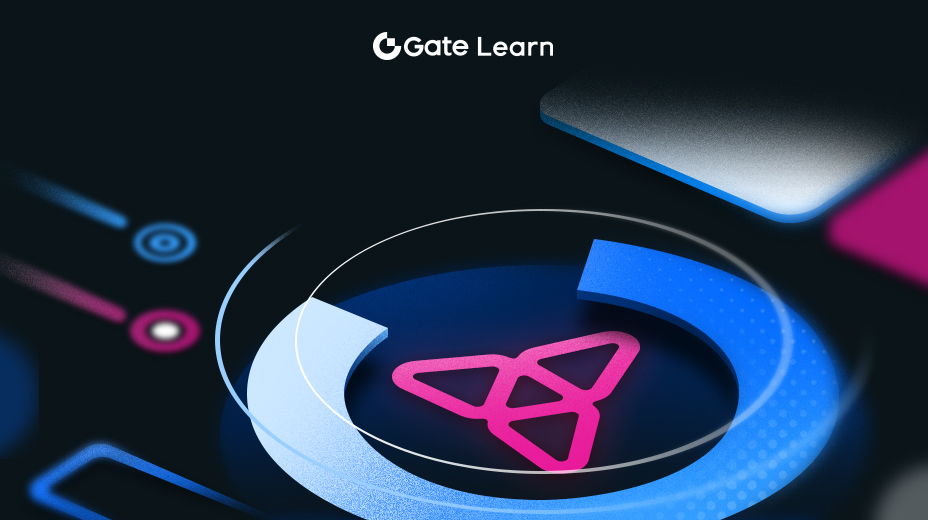Mengerti Token MYRIA
Modul ini mencakup struktur Token MYRIA, penggunaannya dalam ekosistem, insentif ekonomi, kinerja pasar, dan fitur keamanan.
Struktur Token
Token MYRIA didasarkan pada standar ERC-20, yang berarti mengikuti standar token Ethereum yang sepadan dan dapat dengan mudah diintegrasikan ke dalam berbagai aplikasi dan pertukaran yang mendukung token ERC-20, memastikan kompatibilitas dan utilitasnya yang luas di ekosistem Ethereum.
Total pasokan MYRIA Token terbatas, yang berarti token memiliki jumlah maksimum yang tetap, ini membantu menjaga kelangkaan token dan berdampak positif pada nilainya dalam jangka panjang. Distribusi token MYRIA dilakukan melalui berbagai mekanisme, termasuk penjualan perdana, hadiah partisipasi jaringan, dan alokasi untuk pengembangan dan pemasaran.
Penggunaan token MYRIA
Token MYRIA memiliki berbagai fungsi dalam ekosistem, dengan skenario penggunaan utama termasuk pengaturan, biaya transaksi, penyaluran, dan partisipasi dalam ekosistem game.
governance
Pemegang token MYRIA dapat berpartisipasi dalam tata kelola platform Myria melalui pemungutan suara, yang melibatkan keputusan seperti peningkatan jaringan, perubahan parameter protokol, dan banyak lagi. Ini memastikan bahwa komunitas memiliki suara dalam arah platform di masa depan, menyelaraskan kepentingan pengembang dan pengguna.
Pencucian Uang
Meskipun Myria menawarkan biaya Gas nol untuk banyak transaksi, ada beberapa operasi yang mungkin masih menghasilkan biaya, yang dibayar dengan token MYRIA, menjadikannya sebagai bagian penting dari ekonomi transaksi platform. Biaya yang dikenakan biasanya digunakan untuk mendorong operator dan validator node, memastikan keamanan dan efisiensi jaringan.
Jaminan
Pengguna dapat mengunci token di dalam kontrak pintar dan berpartisipasi dalam proses validasi jaringan. Sebagai imbalannya, mereka akan menerima hadiah token MYRIA tambahan. Mekanisme penahanan ini mendorong peserta untuk bertindak jujur dan menjaga integritas blockchain, sehingga membantu menjaga keamanan jaringan.
Partisipasi dalam ekosistem permainan
Token MYRIA dapat digunakan untuk membeli aset dalam game, bertransaksi NFT, dan mengakses konten premium game di platform Myria. Integrasi token ini dengan pengalaman bermain game meningkatkan kegunaannya, menciptakan ekonomi dalam game yang kuat di mana pemain dapat menghasilkan, bertransaksi, dan menggunakan token.
insentif ekonomi
Ekosistem Myria memiliki berbagai mekanisme insentif yang bertujuan untuk mendorong partisipasi aktif, termasuk hadiah staking, pertambangan likuiditas, dan proyek yang didorong oleh komunitas.
- Hadiah Staking: Peserta membantu melindungi keamanan jaringan dengan melepaskan Token MYRIA, dan mendapatkan imbalan berdasarkan jumlah dan jangka waktu penyetoran token tersebut. Imbalan tersebut mendorong pengguna untuk mengunci token di jaringan, meningkatkan keamanan dan stabilitasnya.
- Penambangan LikuiditasUntuk memastikan likuiditas transaksi token MYRIA, platform mungkin meluncurkan program pertambangan likuiditas. Dalam program ini, pengguna menyediakan likuiditas untuk pasangan perdagangan MYRIA di bursa terdesentralisasi (DEX) dan sebagai imbalan, mereka mendapatkan token MYRIA tambahan. Ini membantu menjaga tingkat likuiditas yang sehat dan memastikan transaksi token MYRIA berjalan lancar dan efisien.
- Proyek didorong oleh komunitasMyria sering meluncurkan proyek yang didorong oleh komunitas, di mana peserta dapat memberikan kontribusi pada platform dan menerima imbalan token MYRIA melalui berbagai cara. Cara-cara ini termasuk memberikan umpan balik untuk pengembangan platform, berpartisipasi dalam kegiatan promosi, atau memberikan kontribusi pada proyek open source Myria ecosystem.
Langkah-langkah insentif ini bertujuan untuk membentuk komunitas yang kuat dan aktif, yang sangat penting bagi kesuksesan jangka panjang platform Myria. Dengan memberikan hadiah kepada pengguna yang berkontribusi, Myria memastikan ekosistemnya tetap dinamis dan inovatif.
Performa pasar dan likuiditas
Kinerja pasar token MYRIA dipengaruhi oleh beberapa faktor, termasuk adopsi keseluruhan platform Myria, permintaan akan aset dalam game dan NFT, dan lingkungan pasar. Sejak diluncurkan, token telah terdaftar di beberapa bursa utama, memastikan likuiditas dan membuatnya lebih mudah diakses oleh investor.
- Likuiditas tinggi: Memastikan pengguna dapat dengan mudah membeli dan menjual Token MYRIA tanpa menimbulkan fluktuasi harga yang signifikan. Untuk perdagangan game dan NFT, perdagangan token dengan cepat dan efisien sangat penting. Untuk menjaga likuiditas, Myria menerapkan berbagai tindakan, termasuk program pertambangan likuiditas dan kerja sama dengan bursa utama.
- Performa pasarHistori perdagangan token MYRIA menunjukkan bahwa nilainya terkait erat dengan pertumbuhan dan adopsi platform Myria. Dengan semakin banyak pengembang dan pengguna yang bergabung dengan ekosistem, permintaan terhadap token MYRIA mungkin meningkat, yang berdampak positif pada nilai pasar. Namun, seperti semua mata uang kripto, harga MYRIA juga memiliki volatilitas dan investor harus menyadari risikonya.
Fitur Keamanan
Myria mengambil banyak langkah keamanan untuk melindungi token MYRIA dan memastikan integritas transaksi:
- Audit kontrak pintarToken MYRIA dan bagian lain dari platform Myria secara teratur diaudit oleh perusahaan keamanan independen untuk mengidentifikasi dan memulihkan potensi kerentanan yang dapat dimanfaatkan oleh penyerang jahat.
- Arsitektur terdesentralisasiArsitektur terdesentralisasi Myria didukung oleh teknologi zk-Rollups dan model keamanan Ethereum, sehingga jaringan tetap aman bahkan jika beberapa komponen rusak, mengurangi risiko kegagalan titik tunggal, dan membuat platform lebih tahan terhadap serangan.
- mekanisme penjaminan: Validator yang melakukan staking Token MYRIA memiliki insentif ekonomi untuk menjaga operasi yang jujur. Jika validator mencoba melakukan tindakan jahat, token staking mereka dapat dikurangi, memberikan penghalang yang kuat terhadap perilaku tidak jujur.
- KepatuhanMyria berkomitmen untuk mematuhi peraturan yang berlaku, terutama dalam hal kepatuhan Anti-Pencucian Uang (AML) dan Kenal-Kepada-Pelanggan (KYC). Dengan mematuhi standar ini, Myria meningkatkan keamanan platform dan memenangkan kepercayaan pengguna dan mitra.
Tindakan keamanan ini sangat penting untuk menjaga kepercayaan pengguna, pengembang, dan investor di platform Myria.
Poin penting
- Token MYRIA adalah token ERC-20 yang digunakan untuk pengelolaan, biaya transaksi, staking, dan partisipasi dalam ekosistem game.
- Struktur token mencakup pasokan tetap dan alokasi yang direncanakan dengan hati-hati untuk mempertahankan nilai dan memberi insentif pada partisipasi jaringan.
- Insentif ekonomi termasuk hadiah staking, penambangan likuiditas, dan proyek berbasis komunitas, memastikan partisipasi pengguna dan menjaga kesehatan ekosistem.
- Kinerja pasar dipengaruhi oleh tingkat adopsi platform dan kondisi pasar secara keseluruhan, dengan likuiditas dipertahankan melalui berbagai strategi.
- Fitur keamanan termasuk audit kontrak cerdas, arsitektur keamanan terdesentralisasi, dan langkah-langkah kepatuhan terhadap peraturan untuk melindungi ekosistem.





